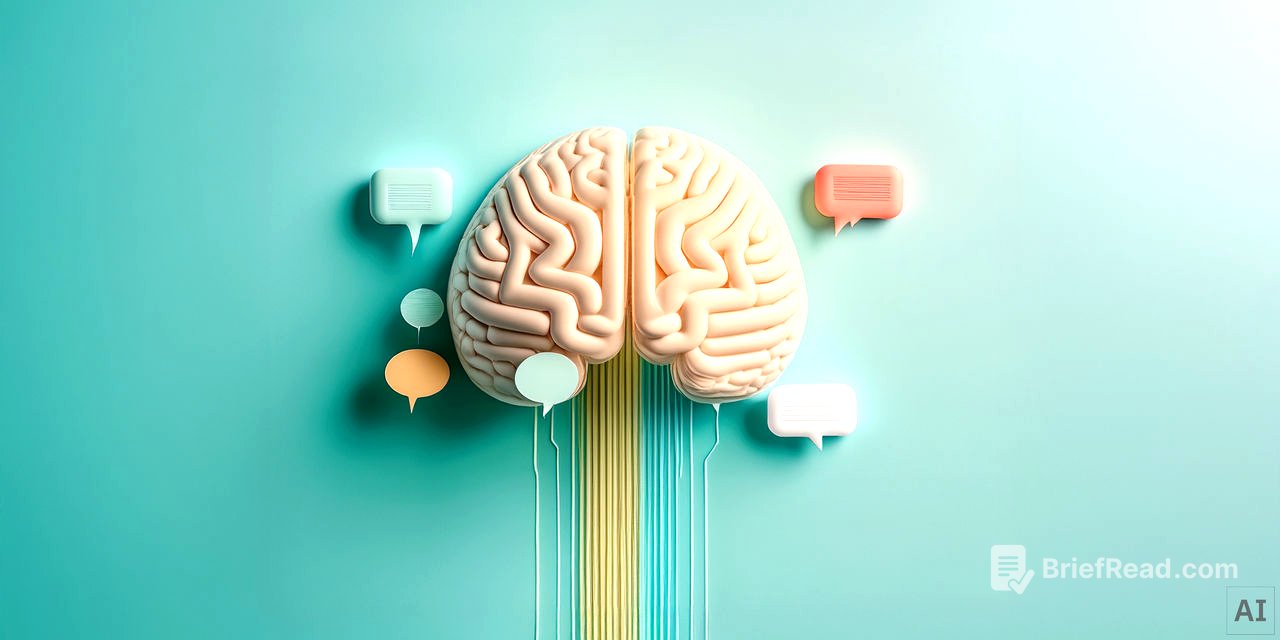TLDR;
This article provides a comprehensive overview of artificial intelligence (AI), covering its definition, key concepts like machine learning and deep learning, and the rise of generative AI. It also discusses the benefits, use cases, challenges, and ethical considerations of AI, as well as its historical evolution and future trends.
- AI enables machines to simulate human intelligence, including learning, problem-solving, and decision-making.
- Machine learning and deep learning are fundamental technologies that power AI applications.
- Generative AI can create original content like text, images, and video.
- AI offers benefits such as automation, enhanced decision-making, and reduced errors.
- Ethical considerations and governance are crucial for responsible AI development and deployment.
What is Artificial Intelligence?
Artificial intelligence (AI) is a technology that empowers computers and machines to mimic human cognitive functions, including learning, understanding, problem-solving, decision-making, creativity, and autonomy. AI-equipped applications and devices can perceive and identify objects, comprehend and respond to human language, learn from new data and experiences, provide detailed recommendations, and operate independently, reducing the need for human intervention. Currently, much of the focus in AI research and development is on generative AI, which excels at creating original content like text, images, and video.
Machine Learning
Machine learning is a subset of AI that involves creating models by training algorithms to make predictions or decisions based on data. It encompasses various techniques that enable computers to learn from data without explicit programming. These techniques include linear regression, logistic regression, decision trees, random forest, support vector machines, and k-nearest neighbor algorithms. Neural networks, modeled after the human brain, are a popular type of machine learning algorithm, consisting of interconnected layers of nodes that process and analyze complex data. Supervised learning, the simplest form of machine learning, uses labeled datasets to train algorithms to classify data or predict outcomes accurately.
Deep Learning
Deep learning is a subset of machine learning that uses multilayered neural networks, known as deep neural networks, to simulate the human brain's decision-making power more closely. These networks include an input layer, multiple hidden layers (often hundreds), and an output layer. Unlike traditional neural networks, deep neural networks can automate feature extraction from large, unlabeled datasets, enabling unsupervised learning. This capability allows for machine learning at a large scale and is well-suited for tasks like natural language processing and computer vision. Deep learning also enables semi-supervised learning, self-supervised learning, reinforcement learning, and transfer learning.
Generative AI
Generative AI, or "gen AI," refers to deep learning models capable of creating complex, original content such as long-form text, high-quality images, and realistic video or audio in response to user prompts. These models encode a simplified representation of their training data and use it to generate new content similar to the original data. The evolution of generative AI has been driven by three deep learning model types: variational autoencoders (VAEs), diffusion models, and transformers. Transformers, trained on sequenced data, are at the core of many current generative AI tools, including ChatGPT, GPT-4, Copilot, BERT, Bard, and Midjourney.
How Generative AI Works
Generative AI operates in three main phases: training, tuning, and generation/evaluation. Training involves creating a foundation model, typically a large language model (LLM), by training a deep learning algorithm on vast amounts of raw, unstructured data. This process yields a neural network with billions of parameters that can generate content autonomously. Tuning adapts the model to a specific application through fine-tuning (using application-specific labeled data) and reinforcement learning with human feedback. Finally, the model's outputs are regularly evaluated and tuned for greater accuracy and relevance. Retrieval augmented generation is a technique used to extend the foundation model with relevant external sources to refine parameters.
AI Agents and Agentic AI
An AI agent is an autonomous AI program that can perform tasks and achieve goals without human intervention by designing its own workflow and using available tools. Agentic AI is a system of multiple AI agents coordinated to accomplish more complex tasks. Unlike chatbots, AI agents exhibit autonomy, goal-driven behavior, and adaptability. Generative AI models focus on creating content, while agents use that content to interact with tools, make decisions, solve problems, and complete tasks.
Benefits of AI
AI offers numerous benefits across various industries, including the automation of repetitive tasks, enhanced decision-making, fewer human errors, 24/7 availability, and reduced physical risks. AI can automate routine digital and physical tasks, freeing up human workers for more creative work. It enables faster, more accurate predictions and data-driven decisions, allowing businesses to act on opportunities and respond to crises in real time. AI also reduces human errors, especially in critical industries like healthcare, and provides round-the-clock availability and consistent performance. By automating dangerous work, AI can eliminate the need to put human workers at risk.
AI Use Cases
AI has a wide range of real-world applications across various industries. In customer experience, AI-powered chatbots and virtual assistants handle inquiries and support tickets, providing faster and more consistent service. In fraud detection, machine learning algorithms analyze transaction patterns to flag anomalies. Retailers use AI for personalized marketing campaigns, recommending products and services based on customer data. AI-driven recruitment platforms streamline hiring processes, and generative AI tools accelerate application development and modernization. Predictive maintenance uses machine learning to forecast maintenance needs and prevent equipment failures.
AI Challenges and Risks
Adopting AI technologies comes with challenges and risks, including data risks (such as data poisoning and cyberattacks), model risks (like theft and manipulation), and operational risks (such as model drift and bias). Ethical and legal risks arise if organizations don't prioritize safety and ethics, potentially leading to privacy violations and biased outcomes.
AI Ethics and Governance
AI ethics is a multidisciplinary field focused on optimizing AI's beneficial impact while reducing risks. AI governance involves implementing guardrails to ensure AI tools and systems remain safe and ethical. Key values include explainability and interpretability, fairness and inclusion, robustness and security, accountability and transparency, and privacy and compliance.
Weak AI vs. Strong AI
AI can be categorized into weak AI (also known as narrow AI) and strong AI (also known as artificial general intelligence or AGI). Weak AI is designed to perform specific tasks, such as voice assistant apps and chatbots. Strong AI possesses the ability to understand, learn, and apply knowledge across a wide range of tasks at a level equal to or surpassing human intelligence. Currently, strong AI is theoretical.
History of AI
The concept of "a machine that thinks" dates back to ancient Greece. Key milestones in the evolution of AI include:
- 1950: Alan Turing publishes "Computing Machinery and Intelligence," introducing the Turing Test.
- 1956: John McCarthy coins the term "artificial intelligence" at Dartmouth College.
- 1967: Frank Rosenblatt builds the Mark 1 Perceptron, the first computer based on a neural network.
- 1980: Neural networks become widely used in AI applications.
- 1997: IBM's Deep Blue beats Garry Kasparov in a chess match.
- 2004: John McCarthy proposes a definition of AI.
- 2011: IBM Watson beats champions at Jeopardy!
- 2016: DeepMind's AlphaGo program beats Lee Sodol in a Go match.
- 2022: A rise in large language models (LLMs) like OpenAI’s ChatGPT.
- 2024: Continuing AI renaissance with multimodal models and smaller, more efficient models.









